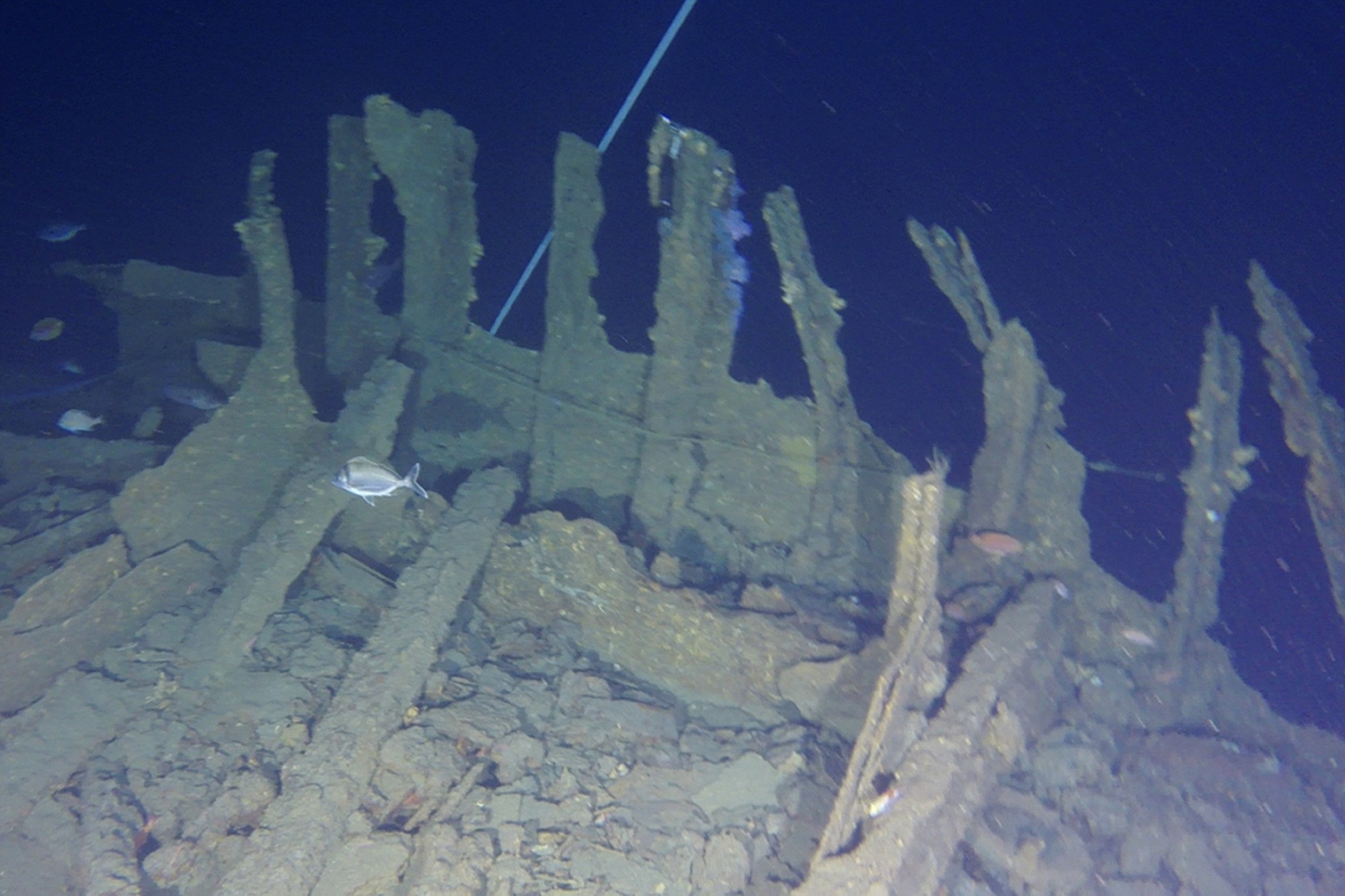WELLINGTON, New Zealand — The S.S. Ventnor sank 112 years ago off the northern New Zealand coast, bearing unusual cargo: the exhumed bodies of 499 Chinese miners, some in wooden coffins and others in sealed zinc caskets.
They had tried their luck in New Zealand’s gold rush, and had paid in advance to ensure their bodies would go back to China, no matter what. A wreck believed to be the ship was discovered in 2012, raising the possibility that someday, the remains might go home.
Now the question is: Should they?
The wreck was found by a team led by John Albert, an amateur New Zealand filmmaker. He says he was drawn to the Ventnor’s story after standing at a bluff overlooking the Hokianga Harbour — near its final resting place — and feeling a chill, like a spirit had entered him.
But his work, including a news conference publicly announcing the wreck’s discovery last week, has upset some members of New Zealand’s Chinese community, who say he removed artifacts from the wreck without consulting them and against their wishes.
“I went to the media conference and had no idea what was going on. I was shocked and disappointed that we hadn’t been consulted and hadn’t been informed beforehand,” said Virginia Chong, past president of the New Zealand Chinese Association. “The bodies and bones on that ship are our ancestors, our people.”
Albert said he did speak to a number of people in the Chinese community but couldn’t consult with everyone. He plans to make a documentary about the Ventnor, but said he never intended to profit from his activities, as some have assumed.
“I’m hurt,” he said. “Everything I have done was done above-board and legally, and with the best intent.”
The story of the Ventnor has its roots in the 1860s, when thousands of Chinese miners came to New Zealand seeking their fortunes. Most left their families behind, hoping to return to China as wealthy men. Many ended up dying poor.
Many of the miners took a type of insurance policy to have their remains returned to China should they die in New Zealand. They paid money into a charity run by Choie Sew Hoy, a successful merchant who sold supplies to the miners and owned mining ventures.
Sew Hoy in 1883 organized the repatriation of 230 bodies to China and planned an even bigger shipment for 1902.
Miners who had been buried for up to 20 years were disinterred. The North Otago Times wrote in 1902 that the bones were washed by a Chinese man “who calmly smoked a cigarette the while, and scrubbed away all the adhering matter with a scrubbing brush.”
Such remains were dried, tied in calico bags and placed in small wooden coffins. Intact bodies, on the other hand, were placed in zinc caskets that were immediately sealed, the newspaper said.
Sew Hoy died before the Ventnor left, and joined the other corpses aboard.
After leaving New Zealand’s capital, Wellington, bound for Hong Kong, the Ventnor struck rocks off the Taranaki coast and limped to near the Hokianga Harbour before sinking in about 500 feet of water.
The captain and 12 crew members died, while other crew members made it ashore in lifeboats. Some body parts drifted ashore and were buried by indigenous Maori.
The manifest of the corpses went down with the ship. That meant for more than a century, Sew Hoy was the only person whose corpse was known to be aboard.
Chong said Chinese researchers in recent months have been able to get preliminary identification of most of the miners from exhumation records. She said the researchers are still working to identify their descendants.
Peter Sew Hoy, the great-great grandson of Choie Sew Hoy, said that while his family gave Albert their blessing to send down a remotely operated underwater vehicle to film the wreck, he had never mentioned taking artifacts.
“It’s a gravesite. It’s a spiritual site,” Peter Sew Hoy said. “From a moral point of view, it would have been nice to have been contacted.”
The Sew Hoy family and others in the Chinese community successfully petitioned to have the site protected in May. The heritage protection order prevents the wreck from being further touched but allows divers to observe it.
Chong said she and about 100 other Chinese representatives traveled last year to the area to formally bless the souls lost on the Ventnor, to ensure they were at rest.
But that wasn’t the final chapter. Albert’s news conference last week prompted excitement and distress, and raised thorny questions about what should happen next.



